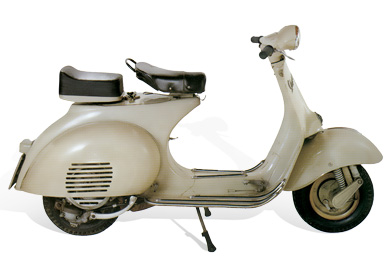Postage free from 99€ (DE)
High customer satisfaction

The Vespa 125 from 1958 (VNA) marks the beginning of the era of large-frame models. The most striking feature is the disappearance of the hatch in the step-through under the seat. Overall, the frame was not only narrower, but also considerably lighter. Thanks to the new production process, the body is now made from two half-shells of sheet metal. The front mudguard is also made from two parts and welded in the middle. Characteristic features that can be found on the Vespa from now on.
The engine is also much more compact, as the swingarm is integrated into the housing. Other details, such as the kickstarter mechanism and gearshift box, were to prove to be groundbreaking innovations. On the VNA, the steering head is split and all controls are freely accessible after removing the upper steering head cover. A very practical solution, especially as neither the speedometer nor the speedometer cable are in the way, as these are not yet part of the standard equipment. The brake drums are made of aluminum and have a cast-iron inner ring, and the moped comes with 8-inch tyres. The vehicles are delivered with a single saddle and luggage rack as standard. The saddle cover is dark green and the Vespa lettering on the leg shield is dark blue.
The vehicles with the frame abbreviation VNA1 were delivered in gray (MaxMeyer code 15046). The frame code VNA2 was changed to a light beige (MaxMeyer 15099).
VNA2 frame numbers by year of manufacture:
1958: VNA2T 68032-107007
1959: VNA2T 107008-116431



